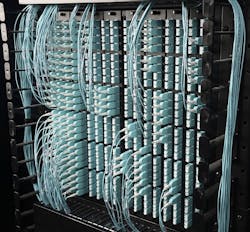2 tips for determining transceiver and fiber cable selection
By KEN FRASER, CABLExpress Infrastructure Design Specialist --When trying to determine what transceivers and fiber cable to use in your installation, determining the speed needed and the distance of the fiber cable needs to run are two critical factors that must be taken into account when first calculating your decision.
1.) Speed and Distance
When using multimode fiber, it’s important to remember that as your speed increases, your distances decrease. Since the need for faster speeds is a growing demand, it’s crucial that you choose a type of fiber cable that will support the increased speed. You don’t want to run new fiber only to find out years later it doesn’t support the newer, faster speed that your network needs to support.
Speaking of equipment, the equipment you have will also play a role in what transceivers you need to purchase. It’s imperative to know what transceivers are supported by your hardware and what speed does the transceiver port support.
Types of Fiber:- Multimode OM1: 62.5 Micron | Orange colored jacket
- Multimode OM2: 50 Micron | Orange colored jacket
- Multimode OM3 & OM4: 50 Micron | Aqua colored jacket
- Singlemode OS2: 9 Micron | Yellow colored jacket
- GBIC (Gigabit Interface Converter): 1 Gigabit Ethernet speed, typically an SC fiber connector
- SFP (Small Form-factor Pluggable): 1 Gigabit Ethernet speed, typically an LC fiber connector
- SFP+ (Small Form-factor Pluggable Plus): 10 Gigabit Ethernet speed, typically LC fiber connector
- QSFP+ (Quad small Form-factor pluggable): 40 Gigabit Ethernet speed, MPO or LC connector
- QSFP28 (Quad small Form-factor plugable 4x28): 100 Gigabit Ethernet, MPO connector
2.) Multiple transceivers options
Within each category of transceivers there are multiple options depending on the type of fiber you will be using and the distance that needs to be achieved. For example, there are 1000Base-SX SFP’s that use Multimode fiber, and 1000Bae-LX SFP’s that are meant to be used with Singlemode fiber.
The same is true for the SFP+ Transceivers, SR is Multimode and LR is singlemode, you can think of the S standing for shorter runs and the L standing for Longer runs. Other versions of Singlemode SFP’s are available for distances over 10km including EX – 40km, ZX- 80km.
By using the chart below, and considering what speeds the link may need to run at in the future, you can then determine if you should install Multimode or Singlemode fiber.
